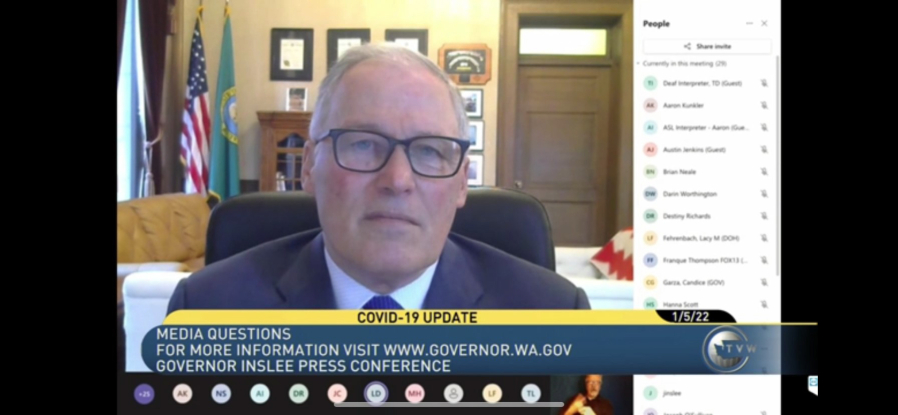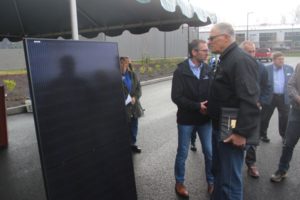Washington Gov. Jay Inslee responded last week to the recent COVID-19 surge caused by the highly contagious omicron variant.
“We are seeing more COVID cases now than at any point during the entire pandemic and our hospitalizations are near the peak of Delta. Omicron is more contagious, and more people will likely get sick,” Inslee said during a Jan. 5 press conference.
Despite the surge in COVID cases and hospitalizations, Inslee said he was not advocating for more business or school shutdowns. Instead, state leaders are urging Washingtonians to use tools like COVID vaccinations, masking and testing to know if they should isolate to help stem the uptick in cases and hospitalizations.
“Because of the nature of this virus and our increasing understanding of the science and tools available to us, we believe this is the most reasonable approach to the status we are in,” Inslee said. “We have vaccines, which are a miracle of modern science and are extremely successful at keeping you from having serious illness. And we have those available universally, for free. We have a variety of common sense measures available – masking, testing, people making self-risk assessments. People who are not vaccinated have had months and months and months. If you have not availed yourself of that, you have made that risk.”
The governor said the state’s economy has rebounded from the initial, pre-vaccination stages of the pandemic.



